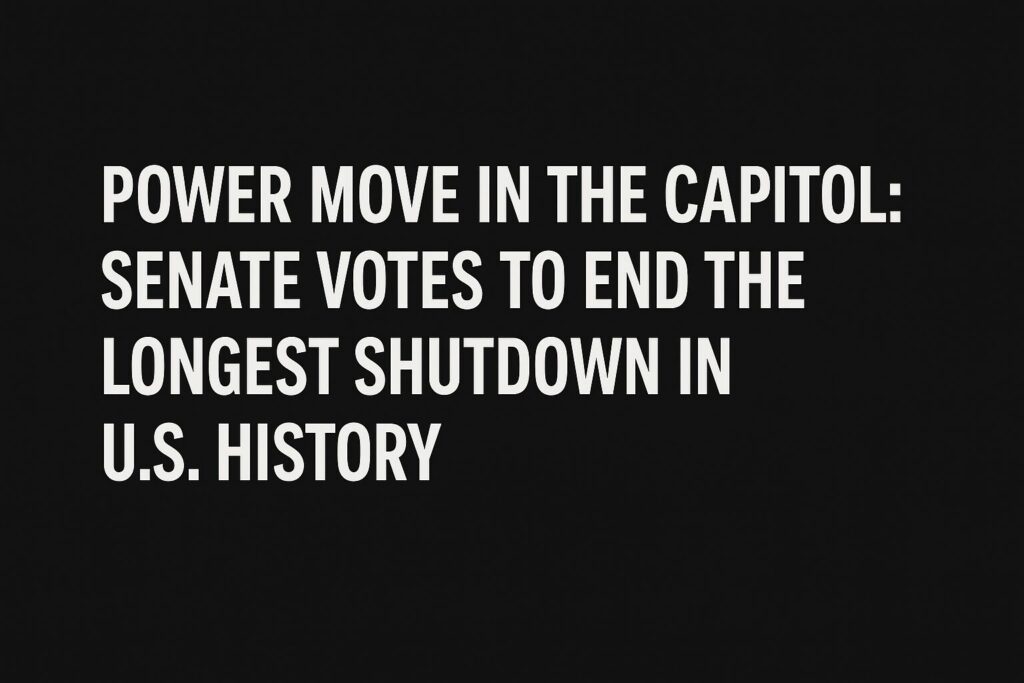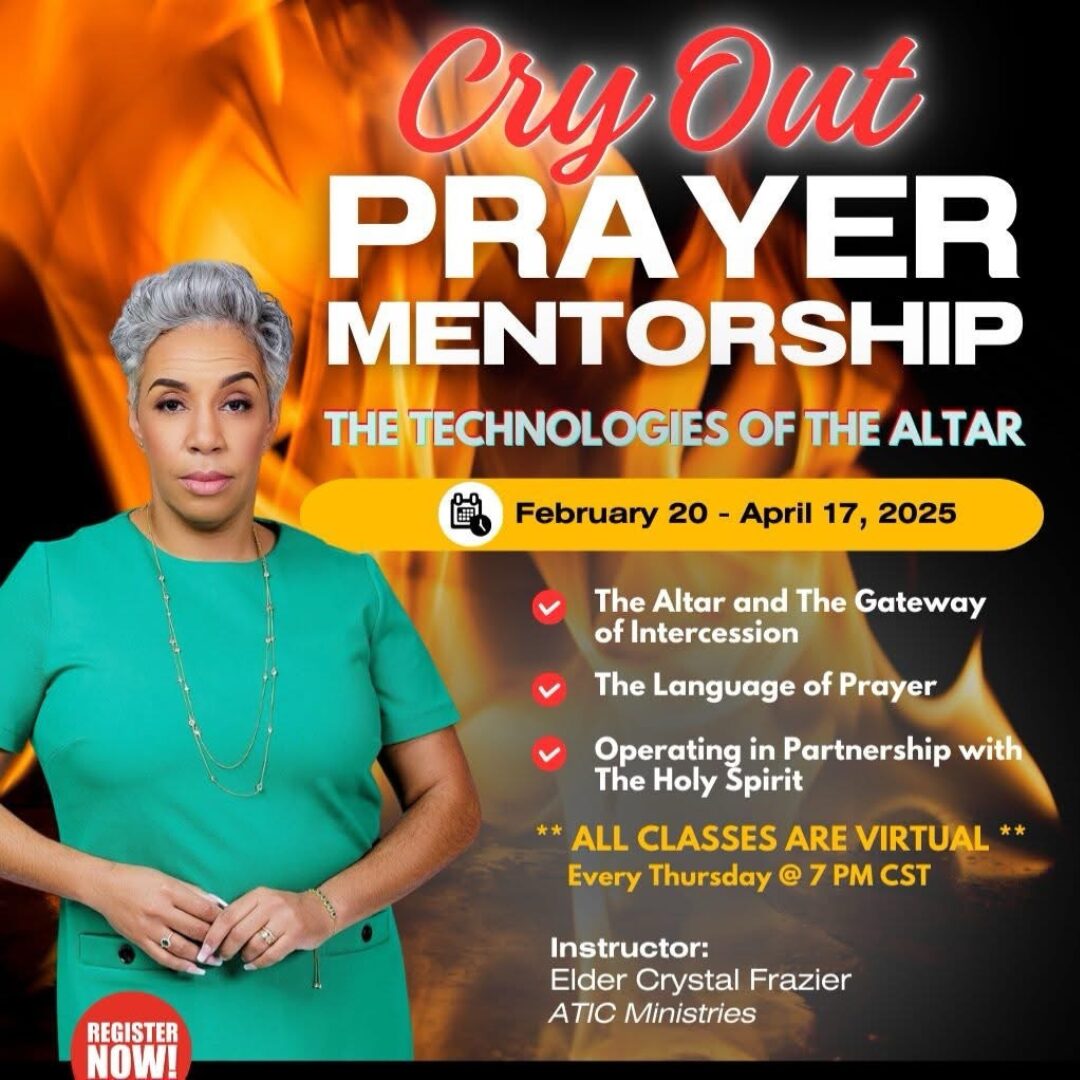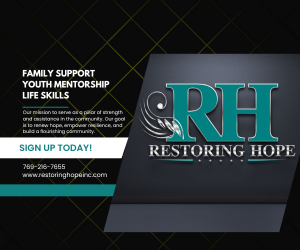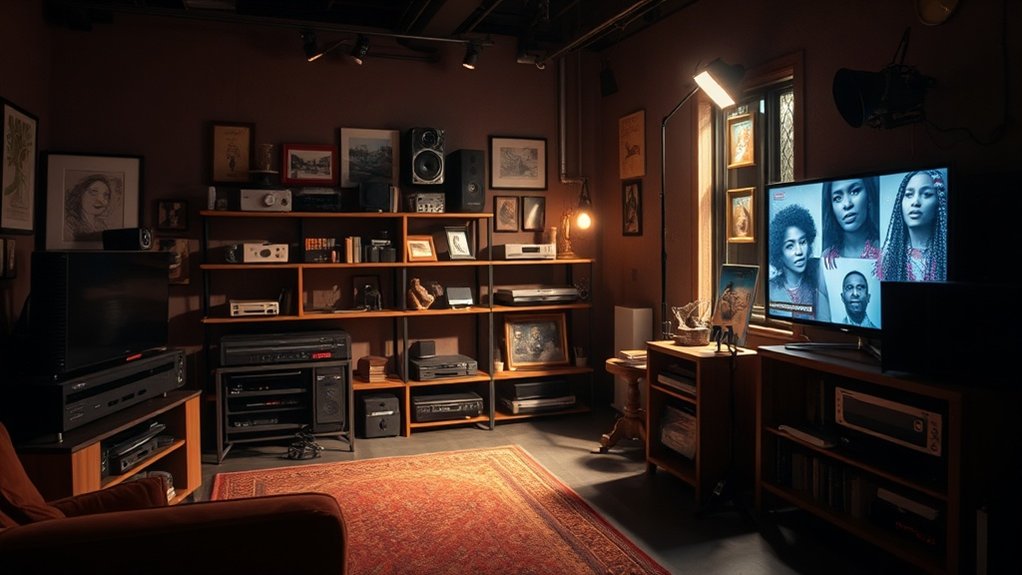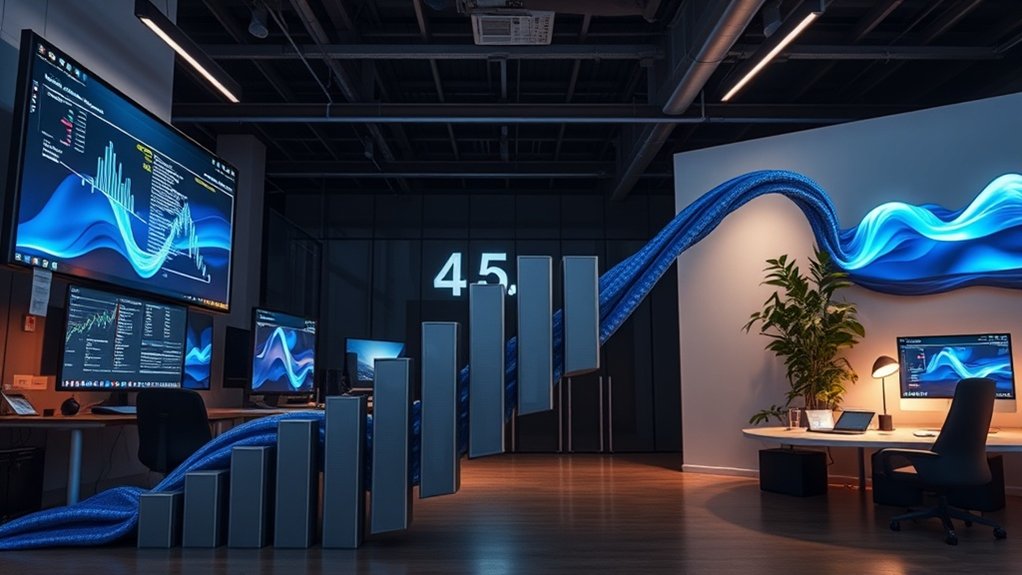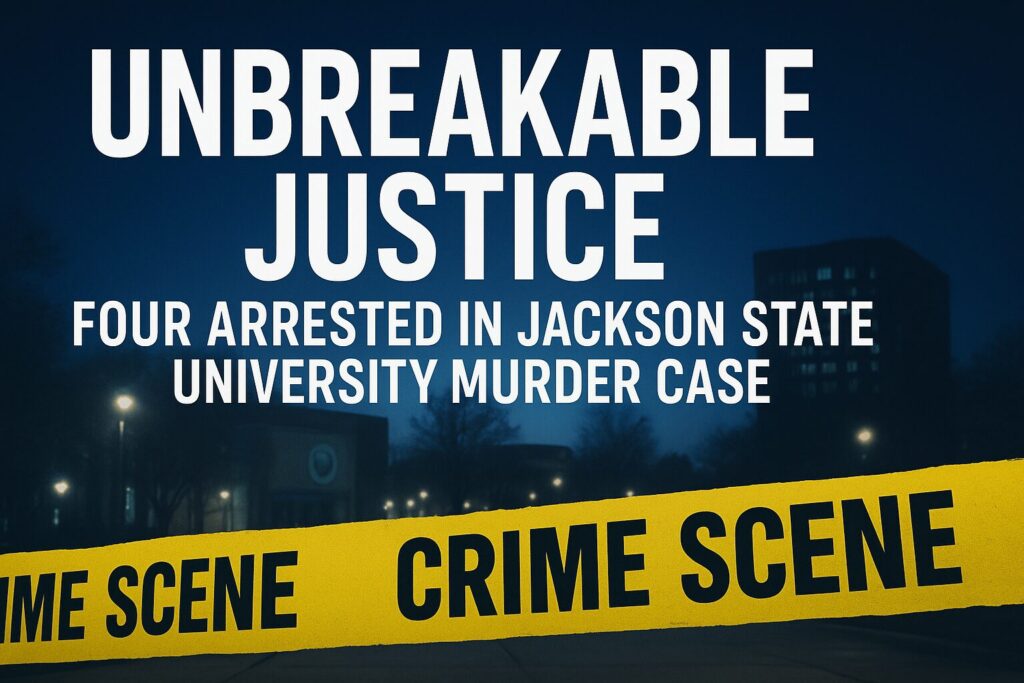Major Takeaways
The Senate finally broke the political gridlock, voting to reopen the government after weeks of nationwide economic strain.
Lawmakers faced mounting pressure from federal workers, businesses, and voters demanding relief from the shutdown’s economic impact.
The bipartisan deal marks a temporary fix, but deeper debates on spending and border security remain unresolved in Washington.

Lawmakers Finally Blink As Americans Pay The Price For Washington’s Shutdown
The lights are finally flickering back on in Washington, but don’t start celebrating yet. After more than a month of federal chaos, furloughs, and finger pointing, the U.S. Senate has taken its first real step toward ending what’s officially become the longest government shutdown in American history.
This isn’t some symbolic handshake across the aisle, it’s a 60–40 procedural vote that cracks open the door to a deal. But as always in D.C., the real story isn’t what’s in front of the cameras. It’s what’s behind the curtain the concessions, the political theater, and the tug of war between two parties that seem more focused on power plays than people’s paychecks.
A Shutdown That Went Too Far
When the government shuts down, that means Washington stops paying its own bills. Federal employees are furloughed, social programs slow down, and millions of Americans get hit by the fallout directly or indirectly.
This one started October 1st, when Congress failed to agree on a new spending bill. What followed was a slow motion disaster: air traffic delays, food assistance backlogs, veterans waiting longer for benefits, and federal workers picking up Uber shifts to pay rent.
While lawmakers traded soundbites, folks outside the Beltway felt the burn. Airports grew chaotic, IRS lines went dark, and thousands of small businesses relying on federal contracts faced closure.
The Senate’s Big Moment
Fast forward to Sunday night. After 41 days of political deadlock, the Senate voted 60–40 to advance a funding package that would reopen the government at least temporarily.
This was a procedural vote, not final passage. But in Senate speak, hitting that 60 vote mark is major. It means there’s finally enough bipartisan muscle to move forward.
The deal hammered out after weeks of backroom bargaining keeps the government funded through late January. It promises back pay for furloughed workers and restores funding for agencies that have been operating on fumes.
But, as always, there’s a catch. Democrats didn’t get the healthcare guarantees they wanted, and Republicans didn’t get the spending cuts they were pushing for.
The Politics Behind the Vote
Let’s break it down without the usual D.C. spin.
Republicans, led by Senate Majority Leader John Thune, are calling this a responsible step toward stability. “We can’t keep holding the country hostage,” Thune said, promising a separate vote in December on extending healthcare tax credits under the Affordable Care Act.
Democrats, on the other hand, are split. Many feel this deal caves too early without securing key protections for working families. Senate Minority Leader Chuck Schumer blasted the vote, saying Democrats gave up their leverage too soon.
Eight Democrats including Catherine Cortez Masto, Tim Kaine, and Dick Durbin broke ranks and voted with Republicans to move things forward. Some progressives are calling them sellouts. Others say they’re realists who know people can’t keep missing paychecks.
And somewhere in the middle is a whole lot of exhausted Americans wondering why the world’s most powerful government runs like a bad reality show.
How We Got Here: The Breakdown
It started, as most D.C. battles do, with money and power.
Lawmakers were supposed to pass a spending package by September 30th. Instead, Congress deadlocked over two major issues: healthcare tax credits and budget cuts.
Democrats wanted guarantees to keep Affordable Care Act subsidies flowing. Republicans wanted new restrictions on domestic spending, particularly social programs.
When neither side blinked, the clock ran out. By midnight, thousands of federal employees were furloughed. National parks closed. Paychecks stopped. And the U.S. government officially entered shutdown mode.
The Human Cost
It’s easy to talk policy in the abstract, but let’s make it plain: this shutdown hurt real people.
Federal workers like TSA agents, postal workers, and military personnel went weeks without pay. Some used food banks. Others drove Uber or Doordash just to keep the lights on.
Air travel took a hit. Short staffing led to flight delays and safety concerns.
Food assistance programs froze applications, leaving thousands of low income families without help.
Small businesses that depend on federal contracts lost revenue they’ll never recover.
In D.C., it’s politics. Outside D.C., it’s people’s lives.
What the Deal Actually Does
The Senate’s current plan which still needs final approval from both chambers would:
Fund the federal government through January 28th, 2026.
Provide back pay for all furloughed workers.
Resume funding for critical services like food aid, the FAA, and the IRS.
Delay further budget fights until after the holidays.
But notice what’s not in the deal: any guarantee that healthcare tax credits under the Affordable Care Act will continue past spring. That’s the sore spot for Democrats and the reason this “solution” might just be temporary peace before the next political storm.
A Deep Divide
Let’s be clear this wasn’t a kumbaya moment. It was survival.
Many progressive Democrats say their leadership folded too fast. They argue reopening the government without securing healthcare guarantees is like patching a leaky roof before a hurricane.
Republicans, meanwhile, are touting the move as proof that bipartisanship still exists. But even in victory, they know they’ve only delayed the next fight.
It’s a political ceasefire, not a peace treaty.
The Longest Shutdown in History
This shutdown now takes the crown as the longest in U.S. history, topping the 2018 to 2019 standoff that stretched 35 days under then President Donald Trump.
The economic damage is already estimated in the tens of billions. Federal workers missed paychecks. Contracts were canceled. Consumer confidence dropped.
And unlike previous shutdowns, this one hit harder because the economy is already strained by inflation and cost of living hikes. When folks living paycheck to paycheck stop getting paid, it ripples through entire communities from D.C. to Detroit to Dallas.
The Black Community DallasUnbreakable: Jasmine Crockett’s Fight to Turn Texas Blue Impact
Let’s talk real talk the shutdown doesn’t hit everyone equally.
Black federal employees make up a disproportionate share of the federal workforce, especially in cities like Washington D.C., Atlanta, and Baltimore. Missing weeks of pay means missed rent, missed childcare, and mounting debt.
For Black owned small businesses with government contracts like construction, logistics, catering, and cleaning this shutdown was a financial chokehold. Many had to shut down temporarily or lay off staff.
Programs like SNAP and WIC, which millions of Black families rely on, saw application delays and service interruptions.
And while politicians sparred over talking points, these communities carried the real burden.
Inside the Power Play
Behind the scenes, this deal was stitched together by a small group of moderates from both sides, the kind of lawmakers who still believe in compromise. But compromise in Washington always comes with consequences.
The sticking point: health care. Republicans refused to bake ACA subsidy extensions into the initial package. Democrats were forced to accept a promise, not a guarantee, that it’ll get a separate vote in December.
Sound familiar? It should. Washington runs on promises until someone decides they don’t.
Why This Vote Matters
In the short term, this vote means paychecks start again. Government agencies reopen. The panic cools off.
But the long term stakes are much higher. This shutdown exposed how fragile the federal system has become how a few political stalemates can throw millions of Americans into crisis.
It also showed just how divided Congress remains. Sixty votes may sound bipartisan, but the split within the Democratic Party signals deeper fractures ahead of the 2026 midterm elections.
Public Opinion: Washington’s Falling Credibility
Polls conducted by CNN and the AP show public frustration hitting new highs.
Seventy two percent of Americans blame both parties for the shutdown.
Fifty seven percent say Congress no longer represents working people.
Forty one percent say they’ve been directly affected by the shutdown through delayed payments, benefits, or job disruptions.
That’s not just dissatisfaction, that’s distrust. And it’s dangerous.
When people stop believing the system works for them, they stop participating. And that’s how democracies crumble, one ignored paycheck at a time.
Economic Ripples
Financial analysts estimate that the shutdown cost the U.S. economy roughly $1.4 billion per day in lost productivity, delayed contracts, and consumer slowdown.
Moody’s Analytics warned earlier this week that a prolonged shutdown could trigger a small but measurable hit to GDP growth for the quarter.
The irony? The shutdown was supposed to be about saving money. Instead, it burned billions, all while shaking public confidence and draining family savings.
The December Showdown
Mark your calendars, because this isn’t over.
Come December, Congress will have to vote again, this time on the health care tax credits Democrats fought for and Republicans postponed.
That vote will decide whether the Affordable Care Act subsidies stay in place or phase out in 2026. For millions of Americans, especially low and middle income families, that’s the difference between keeping health insurance and losing it.
If that fight goes south, expect more fireworks. And possibly, though nobody wants to say it out loud, another shutdown.
What’s Next for Biden and Congress
President Biden is publicly supporting the Senate’s effort, calling it “a step in the right direction.” But the truth is, his administration’s credibility took a hit during the standoff.
The White House underestimated how quickly the shutdown would turn public opinion sour. And while the president tried to stay above the fray, many voters saw indecision instead of leadership.
For Congress, the road ahead is ugly. The Republican majority in the House remains fractured, with hardliners pushing for deeper cuts and Democrats drawing red lines over healthcare and housing.
In other words buckle up. This rollercoaster isn’t done.
The Bigger Picture
Government shutdowns aren’t new. But they’ve become more common and more destructive.
In the past 40 years, there have been 21 shutdowns. Most lasted a few days. But in the modern era of social media, polarization, and 24 hour news cycles, every shutdown becomes a political spectacle.
Each time, the same playbook.
Blame the other side.
Hold out for leverage.
Cave when public pressure mounts.
And each time, it’s the American people especially the working class who pay for Washington’s dysfunction.
Voices from the Ground
Urban City reached out to a few readers across the country folks who’ve been living this shutdown, not just watching it.
Tanya R., a federal employee in Atlanta, said:
“My rent’s due next week and I still haven’t seen a paycheck. They say back pay is coming, but bills don’t wait for politics.”
Malcolm B., a small business owner in D.C. who contracts with the Department of Transportation, added:
“We lost $20,000 in contracts this month. They’ll open it back up, but those opportunities are gone. Shutdowns don’t hurt politicians they hurt us.”
These aren’t isolated stories. They’re snapshots of a nation frustrated by the idea that political games have become a substitute for governance.
Lessons Learned Or Not
What did America learn from this mess? Maybe nothing.
Because when the dust settles, lawmakers will congratulate themselves for “reaching across the aisle.” But it shouldn’t take a month long shutdown to remind elected officials they’re supposed to keep the government running.
This isn’t leadership it’s maintenance. And too often, they can’t even manage that.
Urban City’s Take: A Government Out of Touch
At Urban City, we’re not here to echo D.C. talking points. Let’s be real Washington has drifted so far from the people it’s supposed to serve, you’d need a telescope to see the connection.
This shutdown was a warning shot. Not just about budgets and partisanship, but about leadership itself.
The federal government is running on patches and promises while real people juggle rent, childcare, and groceries. That’s not democracy that’s dysfunction.
Ending this shutdown doesn’t mean the system’s fixed. It just means the pain pauses until the next round.
The Bottom Line
The Senate has voted 60–40 to move forward with a deal to end the shutdown.
Government funding would resume through late January.
Federal workers get back pay finally.
Healthcare subsidies remain unresolved, setting up a December fight.
The public’s trust in Congress continues to erode.
America deserves better than a government that shuts down every time adults in suits can’t agree on the basics.
But until voters demand accountability, not just headlines, we’ll keep watching this same movie play on repeat.
Urban City Insight: The shutdown may be ending, but the damage is done, and the message is clear. Washington’s power games come with real world price tags. Until the people hold the players accountable, the cycle will continue.

